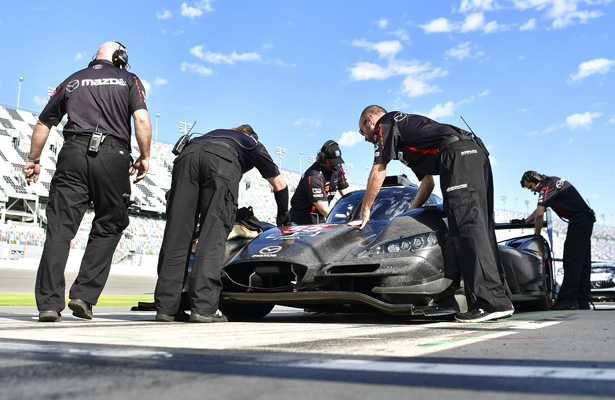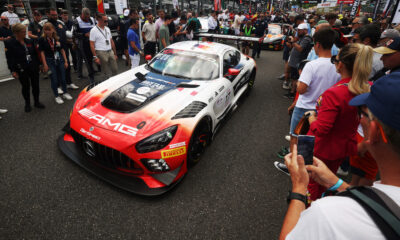
Photo: Rick Dole/IMSA
With the Rolex 24 at Daytona only six weeks away, IMSA is in the final stages of the homologation process for the new DPi and LMP2-spec Prototype machinery, which will debut in next month’s WeatherTech SportsCar Championship season-opener.
According to Mark Raffauf, IMSA’s Director of New Racing Platforms, wind tunnel and engine dyno verification testing will be complete before the Christmas break.
“It’s all going to be done by Tuesday,” Raffauf told Sportscar365. “All seven cars will have full-scale tested at Windshear by then and all three DPi engines will be dynoed by then.”
IMSA has booked a three-night consecutive stretch at the full-scale wind tunnel in Concord, N.C. to finish its validation process, which Raffauf said has so far exceeded their expectations.
All seven DPi/LMP2 variations: the four global-spec LMP2 cars from Multimatic-Riley, Onroak Automotive, Dallara and ORECA, as well as the three initial DPis from Cadillac, Mazda and Nissan, will have gone through the process, along with the four different engines.
The final car to be tested will be Tequila Patron ESM’s Ligier-Nissan DPi, which Raffaif said is scheduled for Tuesday.
“We’ll have a complete picture of all the information,” he said. “What I can say is that the first three cars that were full-scaled correlated quite impressively to the model program in Europe.
“We’re way ahead of the curve now because we almost can predict what the cars will be full-scale.”
Raffauf said all the cars that have been tested are within the performance window, although the results of the wind tunnel testing will help determine what tweaks each prototype will undergo aerodynamically for the Balance of Performance process.
“In a general sense, they’re much closer at high-downforce levels than we thought they’d be and they’re not as far away at low downforce levels as we thought they’d be,” he said. “It’s turning out, with what we know for fact, better than expected, in that regard.”
With each manufacturer and constructor employing different philosophies, Raffauf said there will be aero adjustments unique to each car that can be tweaked over the course of the year.
He said they expect to finalize the initial BoP prior to the Roar Before the Rolex 24, with possible changes to be made between the mandatory Jan. 6-8 test and the race later in the month.
“We’ll have the option to tune it again if we learn something new,” Raffauf said. “But every adjustment will be based on real data points.”
Final homologation for the DPis, meanwhile, is expected to come in early January as well, with LMP2 constructors required to send in their final paperwork to the FIA and ACO by next week.
Raffauf credits the extensive scale-model aero testing at Dynamique Ltd., in England, for ultimately producing accurate results on the track.
“Everybody that’s been involved has put a lot of effort into it,” he said. “I have to give a lot of credit to Ben Wood and Dynamique, our aero people. They helped conceive the process and the process is pretty cool.
“It’s cool because I don’t think anybody has ever done that before, to create something by testing it all in advance before it actually exists.
“To be able to do that has brought up good things and problems, which allowed us and others to deal with it in advance, instead of dealing with it after the fact.
“I think the process development was superb. It’s come out visually spot-on where we want it to be, which is enough distinction but enough functionality to work, which was everybody’s questions.
“But as you can see, they’re just as fast, if not faster, out of the box than anything we’ve had. It’s only going to get better.
“I think we’re in a good place. Now it’s how many more [DPi manufacturers] can we get in here? We’re working on at least two, maybe three more, to be created next year for 2018. That’s next.”























